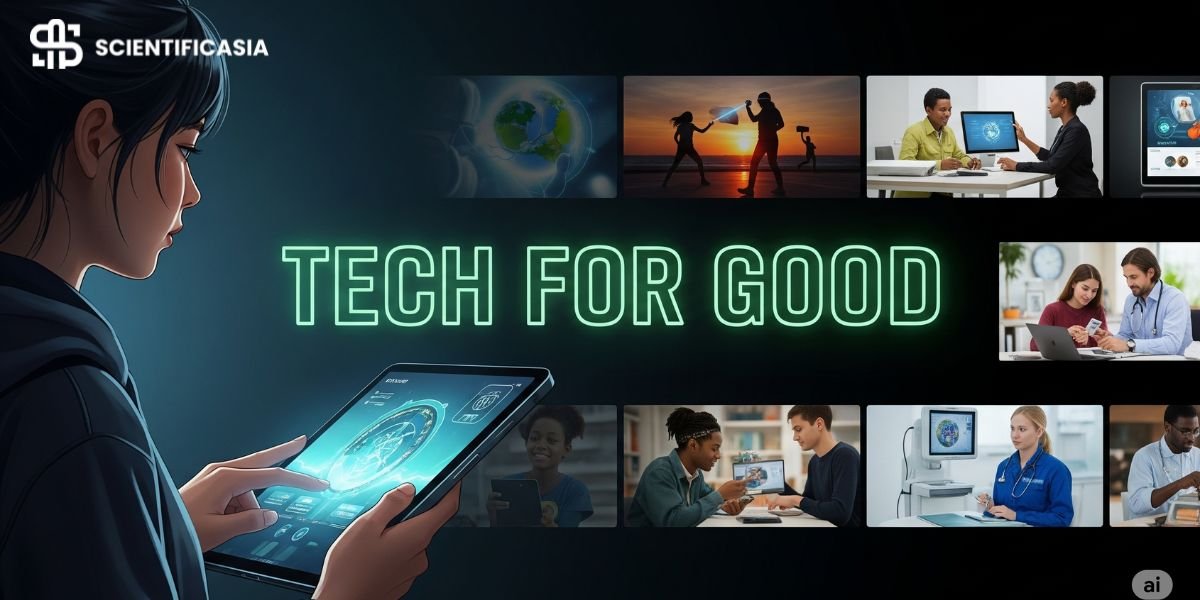Technology often makes headlines for being sleek, fast, or futuristic. But in 2025, another side of tech is quietly changing the world—tools built not just for convenience, but for social impact. These apps and gadgets are helping solve real problems in healthcare, education, safety, and accessibility.
What makes this movement so powerful is its reach. Whether you’re a teacher in a remote village, a first responder in a disaster zone, or someone managing a chronic condition, chances are there’s a tech tool designed to help. Let’s look at some of the most impactful innovations improving everyday life for people who need it most.
Life-Saving Health Tools
Healthcare tech has gone far beyond fitness tracking. Wearable devices now monitor heart rhythms, oxygen levels, and even detect signs of serious illness. If something seems off, the device can alert emergency services automatically—no need to press a button.
AI-powered health apps like Ada or Babylon help users check symptoms and receive instant medical advice. For remote areas, smartphone-compatible ultrasound tools are making prenatal care more accessible than ever. These aren’t flashy luxury gadgets. They’re small devices doing big things—especially in places with limited resources.
Smarter Classrooms for All
Education apps are helping close the learning gap. AI tutors can adjust to a student’s pace, recommend the next lesson, or help explain tricky concepts in new ways. In areas without strong internet access, preloaded tablets let students continue learning offline.
For students with disabilities, assistive technologies are making school more inclusive. Tools like speech-to-text software and reading aids help kids participate fully in the classroom. VR learning experiences are also giving students access to virtual science labs, museums, and historical simulations—no field trip needed.
Better Safety and Emergency Tools
Tech is also saving lives in emergencies. Early warning apps like MyShake give residents a few extra seconds before an earthquake hits. That time can make all the difference.
Wearable panic buttons or SOS smartphone features can quickly send your GPS location to contacts or local authorities. In large-scale disasters, drones with thermal imaging help rescue teams find people faster. These drones use rugged components—similar to those found in a race car wiring harness—to stay reliable in extreme conditions.
Eco-Friendly Tools That Fight Waste
Environmental sustainability is getting a boost from smart gadgets. Home energy apps help families monitor electricity, gas, and water usage. AI-powered sprinklers ensure plants only get the water they need, cutting down waste.
Some cities use smart recycling bins that alert crews when they’re full, reducing unnecessary pickups. In renewable energy projects, companies rely on dependable cable assembly systems to power solar panels and wind turbines safely and efficiently. These aren’t just green tools—they’re practical, scalable solutions for a cleaner planet.
Mobility and Inclusion for Everyone
Tech is breaking down barriers for people with mobility or vision challenges. Electric wheelchairs now include voice commands and smart navigation. Apps like Be My Eyes connect visually impaired users with volunteers through live video, helping with daily tasks like reading a label or navigating a store.
Accessible navigation apps are also gaining traction, helping users find ramps, elevators, or wheelchair-friendly routes. These features are being built into major public transit systems, making cities more inclusive and user-friendly.
Mental Health Support on Demand
Mental health apps are offering comfort and connection when it’s needed most. Apps like Woebot and Wysa use AI to offer simple coping strategies or talk through emotions. While they don’t replace therapists, they fill a crucial gap for people who can’t access regular care.
These tools are private, always available, and often free. For many users, they’re the first step toward healing or managing anxiety and stress in daily life.
Fighting Hunger and Supporting Communities
Food-sharing apps like Too Good To Go help reduce waste by connecting users with unsold meals from local shops. This helps families stretch their budget while keeping food out of landfills. In some cities, nonprofits use similar platforms to coordinate community fridges or donation pickups.
Farmers are also benefiting from tech that helps analyze soil, predict yields, and adjust planting schedules. These tools improve harvests and reduce losses, especially for small-scale growers trying to support their local communities.
Powering Social Change
Tech is also helping activists and nonprofits do their work faster and better. Apps help coordinate protests, organize mutual aid, or raise funds for urgent needs. Messaging tools like Signal offer privacy, while planning tools like Trello or Google Workspace keep projects moving forward, even across continents.
In crisis zones, solar-powered Wi-Fi kits and tablet bundles are giving displaced communities access to education and news. These simple tech setups can help maintain connection, dignity, and a sense of control in uncertain times.
Conclusion
Tech for good is no longer just an ideal—it’s a practical movement gaining momentum across the globe. From health and safety to education and climate, developers are building tools with empathy at the core. These innovations aren’t about selling more devices—they’re about solving human problems in real time.
In 2025, the most meaningful technology isn’t just smart—it’s socially responsible. And the people building it are proving that innovation and impact can go hand in hand.
















